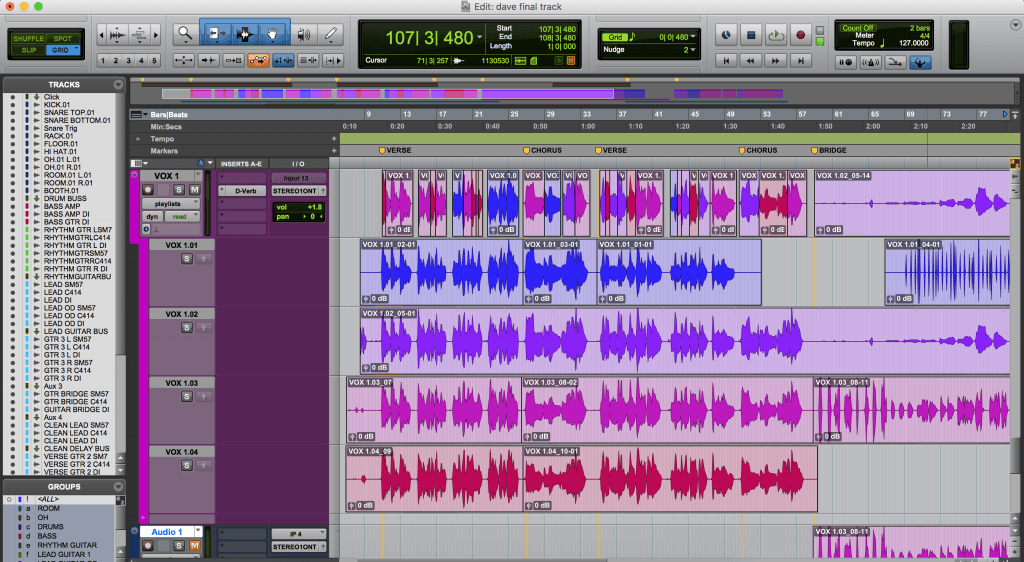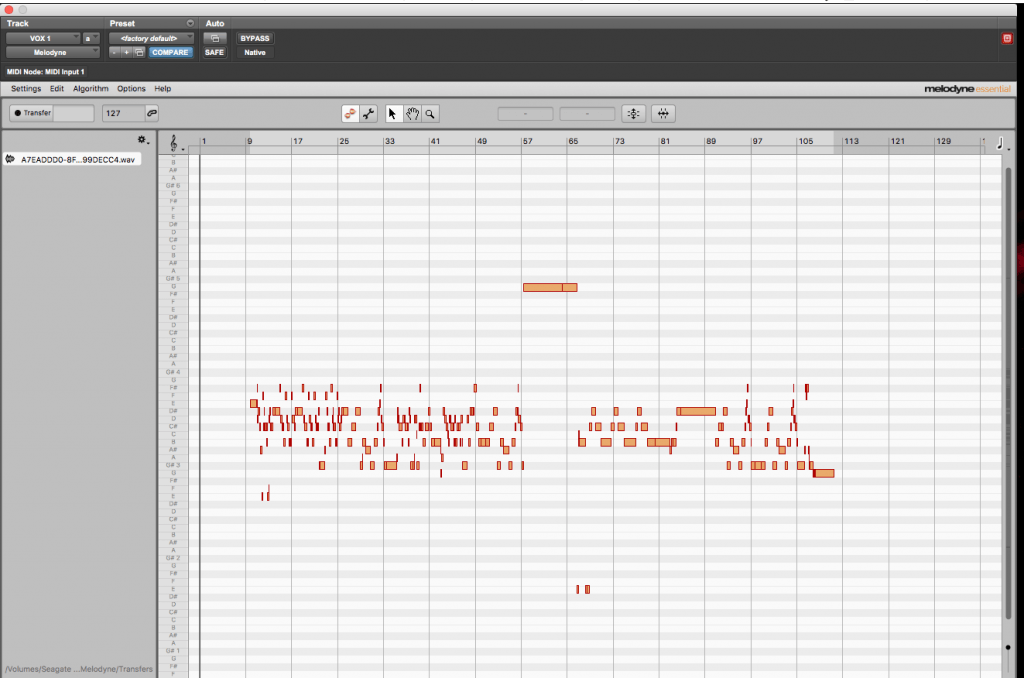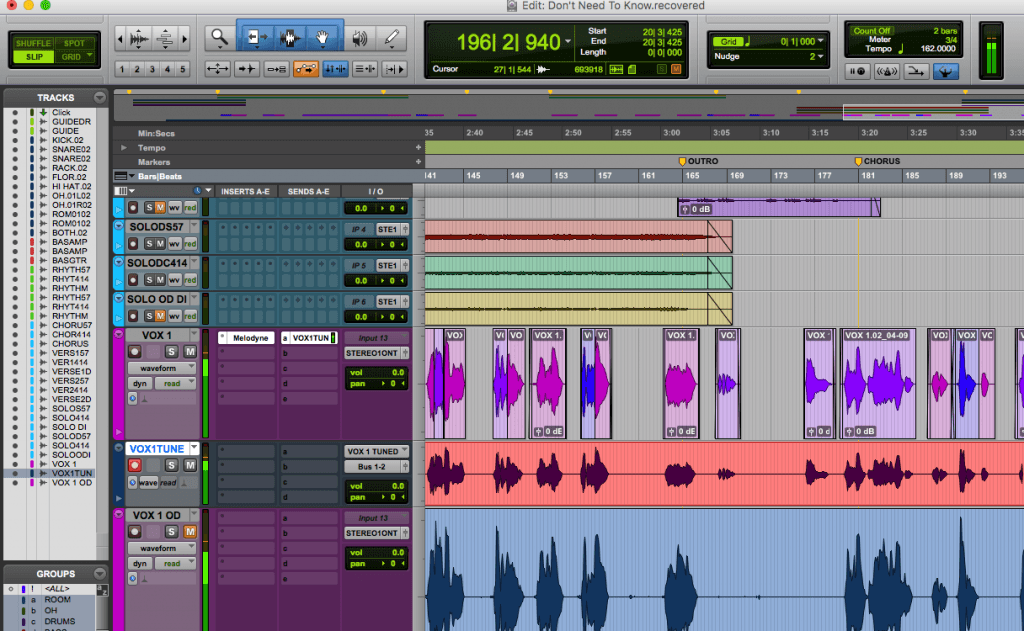Now that I have numerous takes of all the lead vocal tracks, I can now begin selecting the best parts and get rid of all of the unwanted parts.
I began by going through each vocal line of each track and chose the best take which then went onto a separate playlist. Doing this provided a much more consistent vocal track and was already more pleasing to the ear. This is a technique i’ve witnessed first hand from Neil Haynes at The Parlour Recording Studio when my own band band worked with him and is something i’ve applied to my own work ever since. Chris Lord-Alge also emphasises this point and suggests that its crucial for keeping your session organised and manageable. I then ran the comped vocal track through melodyne to fix some tuning issues which were missed in the comping stage. Running the vocals through melodyne at this stage helped them sound more natural when being tuned as the notes were already closer to the desired pitch. I’ve previously found that the more out of tune the vocals are, the more artificial they sound when correcting them.


Once I was happy with the melodye that I had applied, I then recorded the audio out to a new track so that I could hide the original track track and make it inactive. I did this because i didn’t want melodyne to constantly be using unnecessary power from my computer and to ensure my session was more organised. Doing it this way also means that i’ve also got the original files if I did ever need to revisit them for some reason.
Doing all of the editing, comping and tuning at this stage will save a lot of time and effort as appose to doing so just before the mix stage and is something that Mike Senior highly recommends doing as part of the mix preparation.
Mike Senior – Mixing Secrets
